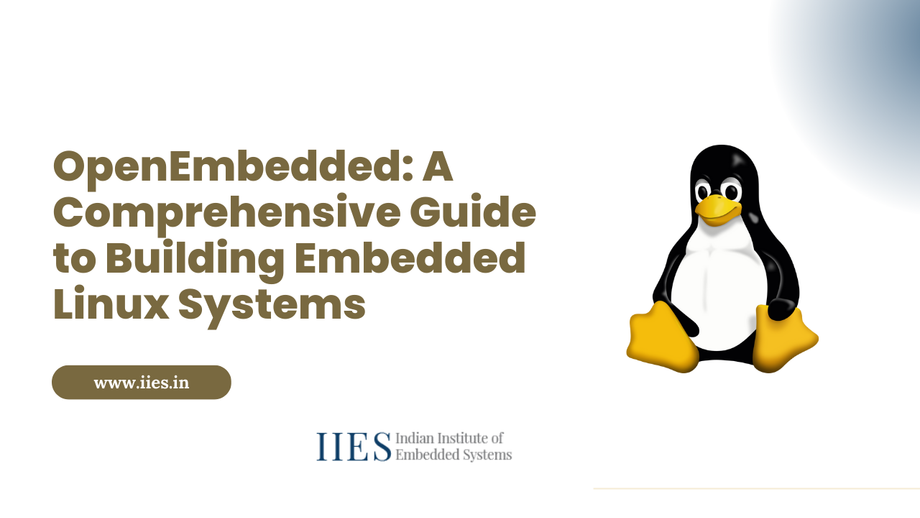Embedded systems are becoming increasingly popular in today's world, with devices ranging from smart home appliances to industrial automation systems. Embedded systems require a specialized operating system that is optimized for the hardware and software requirements of the device. Linux is a popular choice for embedded systems due to its open-source nature, flexibility, and scalability. OpenEmbedded is a powerful tool for building custom Linux distributions for embedded systems. In this blog post, we will provide a comprehensive guide to building embedded Linux systems using OpenEmbedded.
What is Open Embedded?
Open Embedded is a build system that allows developers to create custom Linux distributions for embedded systems. It provides a framework for building and maintaining custom Linux distributions, including cross-compiling tools, package management, and configuration management. OpenEmbedded is based on the BitBake build tool and uses the Yocto Project as a reference platform.
OpenEmbedded allows developers to create custom Linux distributions that are optimized for the specific hardware and software requirements of the embedded system. This can include custom drivers, libraries, and applications. OpenEmbedded also provides a high degree of flexibility and scalability, making it an ideal choice for embedded systems of all sizes.
Getting Started with OpenEmbedded
To get started with OpenEmbedded, you will need a Linux development machine with the required dependencies installed. The first step is to download and install the OpenEmbedded build system. This can be done using the following command:
git clone git://git.openembedded.org/openembedded-core
Once the OpenEmbedded build system is installed, you can configure it for your specific hardware and software requirements. This involves creating a configuration file that specifies the hardware and software components that will be included in the custom Linux distribution.
The next step is to build the custom Linux distribution using the BitBake build tool. This involves running the following command:
bitbake <target>
Where <target> is the name of the custom Linux distribution that you want to build. This can include custom drivers, libraries, and applications that are specific to your embedded system.
OpenEmbedded also provides a package management system that allows you to easily install and manage software packages on your embedded system. This can be done using the following command:
opkg install <package>
Where <package> is the name of the software package that you want to install.
Best Practices for Using OpenEmbedded
To get the most out of OpenEmbedded, it is important to follow best practices for building embedded Linux systems. These include:
- Keeping the custom Linux distribution as lightweight as possible: This involves only including the hardware and software components that are required for the embedded system. This helps to reduce the size of the custom Linux distribution and improve performance.
- Using version control for configuration management: This involves using a version control system, such as Git, to manage changes to the configuration file. This helps to ensure that changes are tracked and can be easily reverted if necessary.
- Testing the custom Linux distribution on the target hardware: This involves testing the custom Linux distribution on the target hardware to ensure that it is optimized for the specific hardware and software requirements of the embedded system.
- Using a package management system: This involves using a package management system, such as opkg, to easily install and manage software packages on the embedded system. This helps to ensure that software packages are up-to-date and secure.
Challenges and Solutions
Building custom Linux distributions for embedded systems using OpenEmbedded can be challenging, especially for developers who are new to the platform. Some of the common challenges include:
- Configuring the build environment: Configuring the build environment can be challenging, especially for developers who are new to the platform. This can involve configuring the hardware and software components that will be included in the custom Linux distribution.
- Cross-compiling: Cross-compiling can be challenging, especially for developers who are not familiar with cross-compiling tools. This involves compiling software on the development machine that will run on the target hardware.
- Testing on the target hardware: Testing on the target hardware can be challenging, especially if the hardware is not readily available. This can involve using emulation or virtualization tools to test the custom Linux distribution.
Some of the solutions to these challenges include:
- Using reference platforms: Using reference platforms, such as the Yocto Project, can help to simplify the configuration of the build environment. This can provide a starting point for developers who are new to the platform.
- Using cross-compiling tools: Using cross-compiling tools, such as the OpenEmbedded SDK, can help to simplify the process of cross-compiling software for the target hardware.
- Using virtualization or emulation tools: Using virtualization or emulation tools, such as QEMU, can help to simplify the process of testing the custom Linux distribution on the target hardware.
Conclusion
Open Embedded is a powerful tool for building custom Linux distributions for embedded systems. It provides a framework for building and maintaining custom Linux distributions, including cross-compiling tools, package management, and configuration management. Open Embedded allows developers to create custom Linux distributions that are optimized for the specific hardware and software requirements of the embedded system. By following best practices and using the solutions to common challenges outlined in this blog post, developers can build custom Linux distributions for embedded systems that are reliable, scalable, and optimized for performance.

